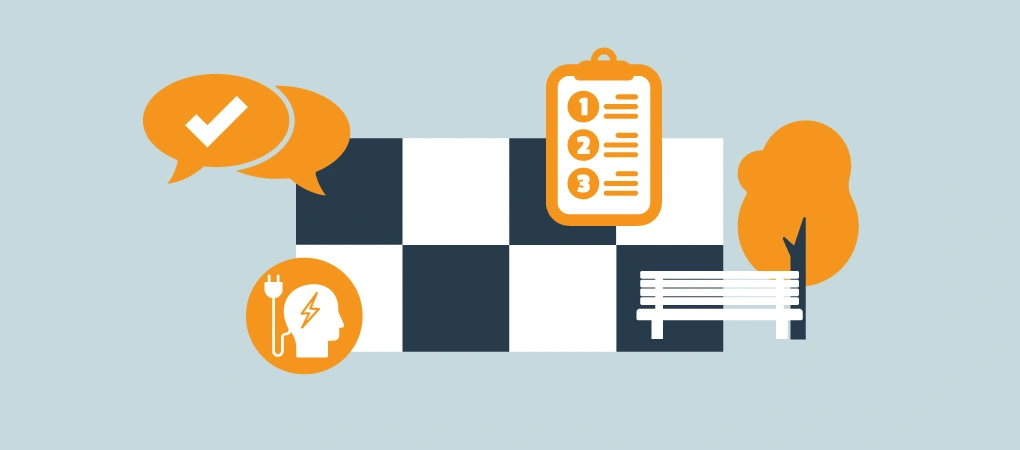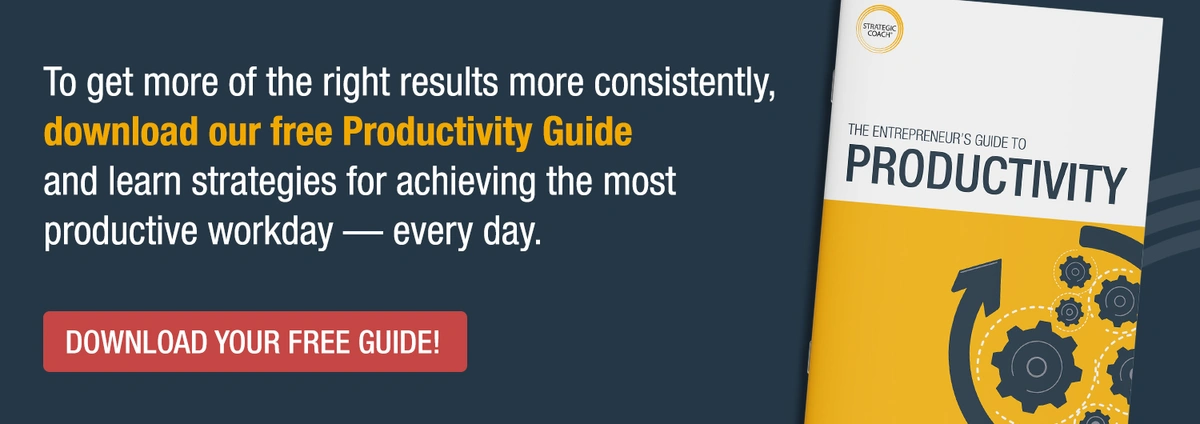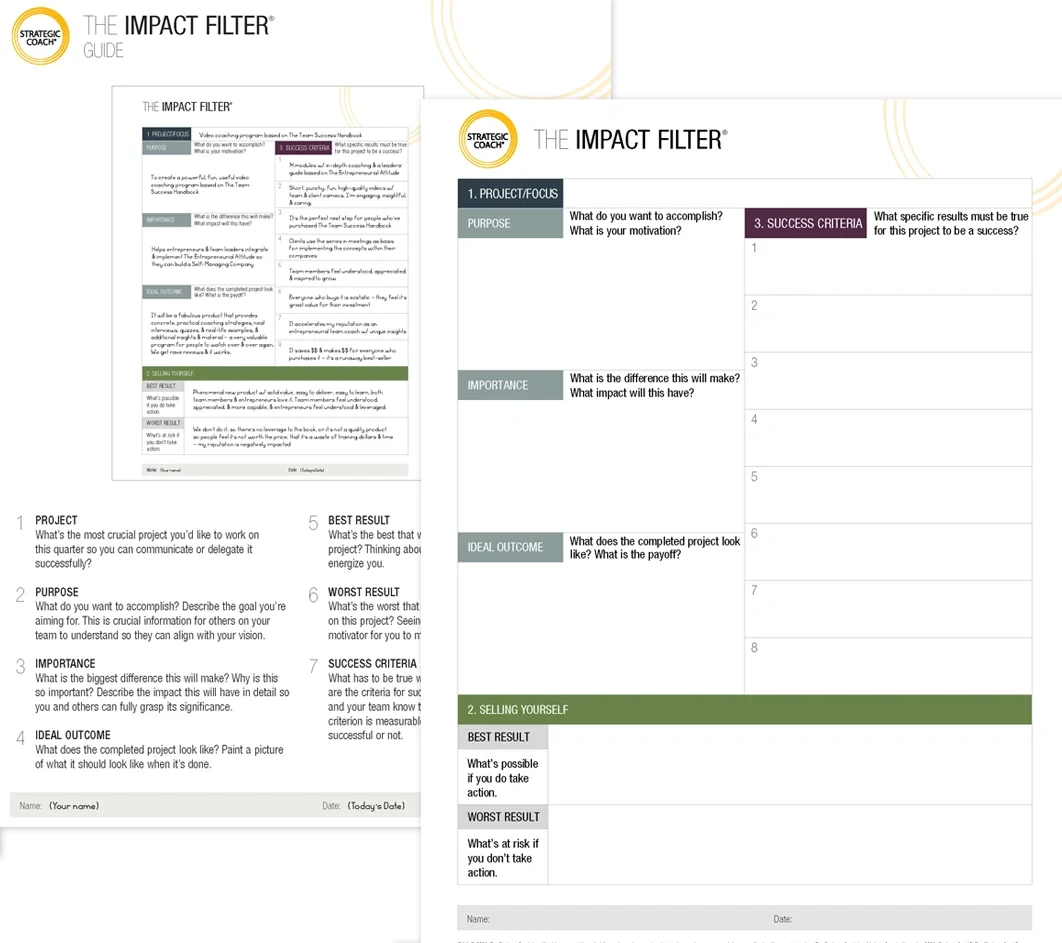The Entrepreneur’s Guide To Unbreakable Focus
What you’ll learn in this Multiplier Mindset blog post:
- Effective Focus Strategies: Discover practical techniques to identify and prioritize key tasks, manage distractions, and maintain focus throughout the day.
- Utilizing Unique Ability: Understand how focusing on your Unique Ability can enhance productivity and lead to better results by leveraging your natural strengths.
- Creating A Distraction-Free Environment: Learn how to set up your workspace and schedule to minimize interruptions, allowing for deep work and more efficient time management.
Many entrepreneurs have a fantasy about arriving at the office absolutely focused, knowing exactly what they’re supposed to do, and spending the entire day doing important work without ever getting off track.
The reality? They get ambushed: Someone stops them at the front door to say that the photocopier is broken. Just as they sit down, their smartphone bleeps with an urgent message. They turn on the computer and the first website they look at claims the market is falling apart. Then a family member calls with an errand to be done on the way home.
This constant discrepancy—or “The Gap”—between the dream of total focus and the complexities of reality can lead to anxiety, guilt, and a loss of confidence.
It helps to understand what’s competing for your focus and then have tools that can help you get it back.
“The boss will do it!”
The challenge in finding focus, says Entrepreneurial Team Strategist and Coach Shannon Waller, is that entrepreneurs are often very good at responding quickly and get energized by being useful. “But if you do that until six o’clock,” she says, “you’ll have taken care of everyone else’s problems and not done a single thing to move your personal projects ahead.”
“We have lots of really smart, talented, capable people in the Program,” says Julia Waller, a Unique Ability Specialist who conducts one-on-one Unique Ability sessions. “People ask a lot of these entrepreneurs. Their teams ask a lot, their clients ask a lot, their community asks a lot. And because they’re capable, they feel like they should do everything—but then what’s your filter? When you say yes to one thing, you say no to something else.”
Dan Sullivan, creator of The Strategic Coach Program, singles out that word: “should.” “Should is always a response to someone else’s expectation, not your own internal motivation. We always hate the things we should do—and we often don’t do the best job on them anyway.”
And as technology increases, so does the “distractibility quotient.” That makes eliminating the “should-do’s” more important than ever. It’s critical to have time out for “conversations with yourself,” says Dan. “The Strategic Coach Program is entirely designed to facilitate that, to help entrepreneurs become more focused.”
So here are three questions you can use to find your focus instantly, and four strategies for staying focused throughout the week:
Three questions to determine what belongs on your radar.
Of all the information, opportunities, and demands constantly coming at you, what do you pay attention to? “The transformation,” Shannon says, “is to figure out what needs to register on your radar screen and what’s just noise. And you can’t just say ’email’ or ’voicemail’ because, guess what: There’s money in some of them and garbage in others.”
Shannon poses three questions for zeroing in on what matters:
- With whom can I produce my best results?
- When am I going to do it?
- What result am I looking for?
With whom can you produce your best results? Look at who your top clients are who generate the most revenue for your business. What are you going to be doing with them? Preferably actions involving your Unique Ability. When are you going to do it? If it doesn’t get into your calendar, it won’t happen. What specific result are you going to be intentional about creating? You can get clearer about this with The Impact Filter tool.
“When you’ve got that figured out,” Shannon says, “focus is not a problem. You know what you’re doing and with whom and for what result—and that’s the bottom line.”
Four strategies for staying on track.
Now, you’ve figured out what’s important. But there’s still a world out there that might have different plans for you. So here are four ways to protect your focus day to day:
1. As Dan says, “Sell yourself on it first.”
The biggest reason people can’t focus? “They haven’t actually sold themselves on the thing they’re trying to do,” Dan says. “Nothing sells itself. You’re the only person who can sell yourself. So I spend about a half-hour on that first.”
“Like meetings,” he says. “How many people go to them without any preparation whatsoever? I don’t go to meetings unless I’ve totally sold myself on why I want to be there. I never set up a sales situation unless I’ve sold myself on what it is I want to sell and what it will look like when it’s sold. And I don’t create anything I haven’t sold myself on first.”
2. Three things a day.
“Instead of trying to do 20 things in a day—do three,” Dan says. “What are your three crucial results for the week, or the day? When you’re intentional about that, this calmness comes in, and you can track whether you’re making progress. It’s not to say things will go exactly as planned, but you’ll have fewer things to focus on, so you can put more mental energy into making sure those things happen. The more you do that, the more your brain just locks in.”
3. Focus on Unique Ability.
“Once you have The Entrepreneurial Time System protecting your time,” says Julia, “Unique Ability is probably the best focusing tool there is. That’s how you’re going to find the multipliers, the 10x improvements. If you’re using your natural energy and passion, you’re just going to want to focus.”
A quick way to start identifying Unique Ability is to ask, “What do I want to do more of right now, and what do I want to do less of?” Why not go with your natural energy? That’s where you’re going to create the most value, be most productive, and have the most fun.
4. Find the right space for the activity.
“For people who have to do creative thinking work,” Shannon advises, “the best thing they can possibly do is not go into the office. Take yourself out to a café: You’re in a social place, there’s white noise around you, you’re in a community—but no one’s going to disturb you.”
This works for team members too. “I know people who have their team meeting at 7:30 a.m. at a restaurant before they go into the office with their entrepreneur,” she adds.
If you need to stay in the office, try using signage. Around our offices, you’ll often see “Focusing” signs hanging from the doorknobs.
Shannon points out a proviso: “If you have a sign on your door all day, every day, it’s meaningless. You have to say, ‘I’m focusing between this time and this time’ so people will know when they can communicate with you. This way, you can actually schedule your interruptions.”
All of these strategies have one aim in mind: to get you focused. Why is that so important? Being focused puts you in a state of being “unmanipulated,” as Dan calls it. You, not the world around you, are the one in charge of your life. When you do this, you’re not missing out on what’s most important to you. And no matter what you do, you know you’re doing the right thing, with the right people, producing the right results.








